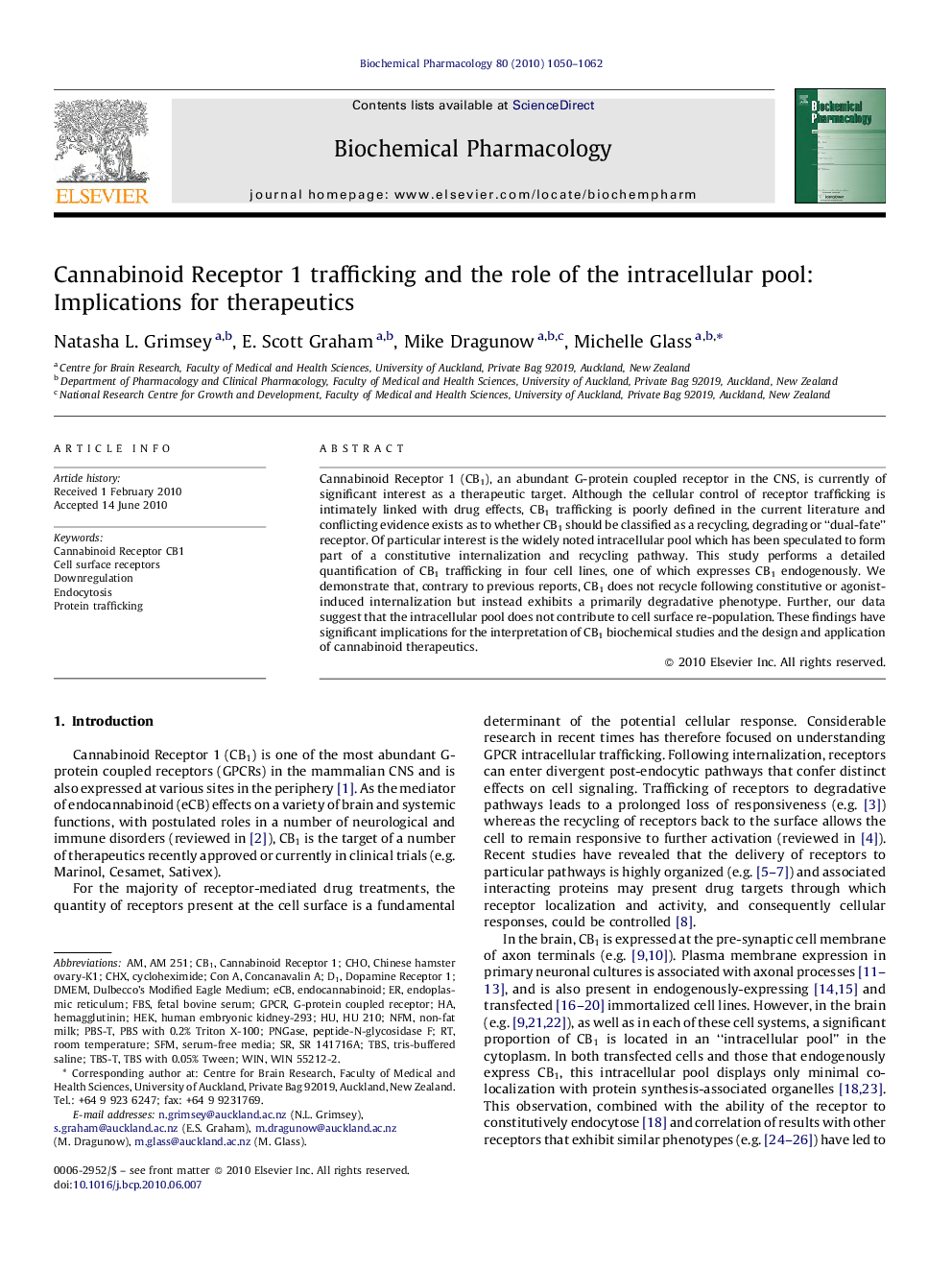| Article ID | Journal | Published Year | Pages | File Type |
|---|---|---|---|---|
| 2513351 | Biochemical Pharmacology | 2010 | 13 Pages |
Cannabinoid Receptor 1 (CB1), an abundant G-protein coupled receptor in the CNS, is currently of significant interest as a therapeutic target. Although the cellular control of receptor trafficking is intimately linked with drug effects, CB1 trafficking is poorly defined in the current literature and conflicting evidence exists as to whether CB1 should be classified as a recycling, degrading or “dual-fate” receptor. Of particular interest is the widely noted intracellular pool which has been speculated to form part of a constitutive internalization and recycling pathway. This study performs a detailed quantification of CB1 trafficking in four cell lines, one of which expresses CB1 endogenously. We demonstrate that, contrary to previous reports, CB1 does not recycle following constitutive or agonist-induced internalization but instead exhibits a primarily degradative phenotype. Further, our data suggest that the intracellular pool does not contribute to cell surface re-population. These findings have significant implications for the interpretation of CB1 biochemical studies and the design and application of cannabinoid therapeutics.
Graphical abstract“Intracellular pool” CB1 receptors do not contribute to cell surface re-population, which requires new protein synthesis as CB1 does not recycle following internalization.Figure optionsDownload full-size imageDownload as PowerPoint slide
